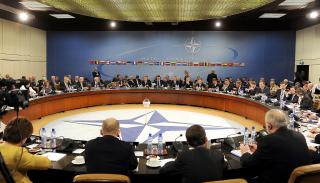
Breadcrumbs navigation
Imagining (in)security: NATO's collective self-defence and post-9/11 military policing in the Mediterranean Sea
In his new article for BISA journal Review of International Studies, Julien Pomarède discusses how scenarios of dangerous futures shape security institutions in the framework of post-9/11 counterterrorism. He argues that the political sociology of transnational fields of power can help us to historicise and assess more precisely the impact of imagination over power and control in the pre-emptive era.
BISA Director, Juliet Dryden, spoke to Julien about his research which uses NATO's reaction to 9/11 as a case study.
BISA members receive access to RIS (and our other journal European Journal of International Security) as a benefit of membership. To gain access log in to your BISA account and scroll down to the 'Membership benefits' section. If you're not yet a member join today.
Full article abstract
DOI: https://doi.org/10.1017/S0260210521000024
How do scenarios of dangerous futures imagined in the framework of the post-9/11 counterterrorism shape security institutions? Critical Security Studies (CSS)'s dominant answer is that state apparatus are significantly transformed by the use of new technologies of prediction that are very prolific in imagining potential risks. The present article questions this technologically determinist thesis. Introducing the notion of weak field in the study of pre-emption, it argues that the political sociology of transnational fields of power can help us in historicise and assess more precisely the impact of imagination over power and control in the pre-emptive era. The article analyses NATO's reaction to 9/11 as a case study. It shows how the fabrication of potential terrorist threats by NATO's practitioners, that served to justify the pre-emptive use of the collective self-defence clause of the Washington Treaty (Article 5), evolved into an ambiguous support for NATO's military policing of the Mediterranean basin and into its involvement in migration control.


